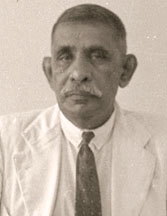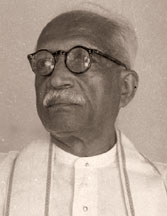|
dailynews |
|
|
|
|
|
OTHER LINKS |

|

|

|
The UNP and the making of the conflictS. Piyasena
HISTORY: September is a very significant month in Sri Lankan political history, 55th anniversary of the Sri Lanka Freedom Party (SLFP) was celebrated and the 60th anniversary of the United National Party (UNP) too. Furthermore the centenary birth anniversary of Sri Lanka's first Executive President J.R. Jayewardene also falls on September 17. Yet, I did not have the opportunity to analyze the comments made at the 55th jubilee ceremony of the Sri Lanka Freedom Party as currently I am away from the Island. However, I had the opportunity to read many comments which were as tributes for the 60th anniversary of the United National Party, but I have to say, with sadness in heart, that some of these comments have been made by people who seem to be ignorant not only on the historical beginning of the UNP but the incidents of the recent past. It is a commonly known truth that ancient history has to undergo a certain defacement in every country of the world, but it is not that easy to change the contemporary history because there can be at least a handful of persons still alive, who had witnessed the significant events of recent history. There is no doubt that the United National Party, which came to life in the 'Palm Court', mansion in September 1946, had done an invaluable service to the nation. But I strongly believe that the honour of that enormous task could be given only to two persons, D.S. Senanayake, and C.W.W. Kannangara, two genuine leaders of the UNP. It is because of their great efforts by implementing two plans of extreme national importance before the UNP was born. After enactment of the Donoughmore constitution, the above two Ministers held the portfolios of Agriculture and Education respectively. D.S. Senanayake had clearly understood that the significant irrigation schemes in the pre-colonial era and the paddy farming came to an end with British imperialism which started to plant coffee, which was followed by tea that led to a deep erosion of the Sri Lanka's fertile soil. The first step he took when he was elected was prohibiting any kind of a plantation on an altitude higher than 5000 feet. After doing that he started an invaluable task of establishing agricultural estates in northern region of Sri Lanka. In 1933 when Mr. D.S. Senanayake was out of the motherland for a while, I, as a school student of 11 years, remember seeing the picture of his acting minister John L. Kothalawala symbolically axing the first tree to clear the land for Minneriya irrigation scheme. This project, which started in Minneriya, then proceeded to Minipe, Kanthale and Kalawewa, transforming those dry shrub lands to new green and prosperous estates, thus uplifting the living standards of thousands of simple and poor farmers. The great revolution in the arena of education began after the end of the 2nd world war. It is recorded in black and white in the history when Education Minister C.W.W. Kannangara submitted the Cabinet paper regarding free education to usher in a new chapter in Sri Lankan life. It was S.W.R.D. Bandaranaike, George E. De Silva, Arunachalam Mahadeva who supported the bill while the UNP giants D.S. Senanayake and J.L. Kothalawala opposed it. At the same time, the many young parliamentarians such as, Dudley Senanayake, the son of D.S. Senanayake, who represented the State Council and J.R. Jayewardene, who represented Kelaniya electorate supported the bill for free education. Though we saw what happened to the Sri Lankan agriculture and free education after the disastrous 1977, that is another story, which should be left for detailed analysis later. Now, let us reflect on the establishment of the Untied National Party. According to the Soulbury constitutional reforms it was proposed to have a House of Representatives, a Senate as an Upper House and a system of registered political parties. Thus, it was decided that the political party that gets the majority of the people's votes and captures the majority seats in the House of Representatives gets the power to govern the country. The contemporary powerful parties were the Ceylon National Congress, which was lead by George E. De Silva, Sinhala Maha Sabha led by S.W.R.D. Bandaranaike and three leftist parties, Lanka Sama Samaja Party, Bolshevik Party and Ceylon Communist Party. The prominent Tamil parties were the Ceylon Indian Congress, which had the support of overwhelming majority of estate labourers and the Tamil Congress of North which was led by G.G. Ponnambalam. In 1942, Minister D.S. Senanayake left parliament even forgetting his hat after his statement of opposing the proposal tabled by Ceylon National Congress that the ultimate objective of the Congress should be to demand total independence and not limited dominion powers as proposed by Senanayake. However, this proposal of demanding total independence was approved by the Congress when it was proposed by J.R. Jayawardene and seconded by Dudley Senanayake. In 1946, D.S. Senanayake invited the Sinhala Maha Sabha leader S.W.R.D. Bandaranaike, Ceylon National Congress leader George E. De Silva, Northern representatives, Mahadeva, S. Natesan, Jeganathan Thyagarajah, President of the Muslim League, T.B. Jaya and the Yonaka League Chairman A.R.A. Rasik to establish a new national party. The invitation being accepted a new party was establish. This new party was named as the United National Party. In the 1947 election, a major internal conflict took place in this party. A number of seats were named as open seats. Even after forming the party by uniting several fronts, the UNP was only able to win 42 of the 95 seats. Leftist parties won 20 seats and the Ceylon Indian Congress won seven seats. The Tamil Congress, which was led by G. G. Ponnambalam, was able to win six seats in North and the Trincomalee seat in the East. The independent candidates won the remaining seats. Most of these independent candidates were able to gain this victory by campaigning for the Leftist and Indian voters against the UNP. The parliamentarians of the North who supported the UNP had to face a huge debacle. As the UNP was short of six seats for absolute majority, D. S. Senanayake started several strategies to show the Governor that his party fulfils the condition needed for a majority government. Thus, Senanayake invited the Ceylon Indian Congress to join the government. He wooed the Congress through Peri Sundaram who had been a fellow Minister with Senanayake since the period 1931 State Council. Although, the Member of Parliament for Nuwara Eliya Saumiamurthy Thondaman and George Motha, Member of Parliament for Maskeliya, had agreed to consider this proposal, five other MPs rejected the proposal stating that being a labourers party, they could not join the UNP. There is another important fact that needs to be pointed out here. That is, C. W. W. Kannangara represented the Mathugama seat in the State Council at the time he was Minister of Education. Although the Ceylon Indian Congress had taken a decision to support the candidates opposed to the UNP, the Congress decided to make an exception in Mathugama because of Kannangara's service to the Tamil children by introducing free education. Thus more than 5000 Tamil estate voters in Mathugama were instructed to vote for Kannangara. As a much respected philanthropist who was the creator of the Sripali College in Horana, Wilmot A Perera met Kannangara and informed him that he ( Perera) had received an invitation to contest Mathugama seat. However, he said that if Kannangara would resign from the UNP and contest Mathugama as an independent candidate he (Wilmot A Perera) would contest Horana, without challenging Kannangara in Mathugama. However, Kannangara said that he could not break the promise given to D. S. Senanayake. The end result was Kannangara was defeated in Mathugama electorate by Wilmot A Perera despite the educational revolution ushered in by the former. Even the Tamil estate workers defied the party diktat and voted for Perera who was supported by the leftists parties. D. S. Senanayake, in his strategy to get absolute majority, started to woo the Tamil MPs opposed to the Ponnambalam camp. C Suntharalingam, Vavuniya MP who was always opposed to Ponnambalam's 50-50 demand and Mannar MP C. Siththappalam, who defeated the UNP candidate Jaganathan Thyagarajah had agreed to become ministers in D. S. Senanayake Cabinet. Subsequently, three others, Kayts MP Alfred Thambiah, Kalkuda MP V Nalliah and Pathiruppu MP Edirimanasingham have joined the government. The Sinhalese who joined the government were Labour Party's sole MP. A. E. Gunasinghe, Deniyaya MP Victor Rathnayake, Kadugannawa second MP H. R. U. Premachandra and Welimada MP K. V. D. Sugathadasa, who narrowly got through with a mere 22 vote majority, defeating the UNP's Divithotawila. Sugathadasa's victory was assured by estate voters who en block voted against UNP. That is how, D. S. Senanayake formed his majority government. Two of the UNP Ministers - George E de Silva of Kandy and R. S. Senarath Gunawardhane of Gampola - were unseated by successful election petitions field by defeated candidates. The main charge against Gunawardhane was that UNP gangs had prevented 2000 estate workers from casting their franchise. In the subsequent by-elections, leftist candidates easily defeated the UNP with the help of estate worker votes. What was the UNP strategy when the estate workers voted against the party? Two top strategists, young J. R. Jayawardene and A. E. Nugawela advised the party leadership that the UNP could win all the seats in the central hill country if the estate workers were disfranchised. They pointed out that the UNP could bag all seven electorates earlier won by the Ceylon Tamil Congress. DS was convinced that this would be the best strategy. However, A Rathnayake proposed that UNP should invite the Tamil Congress to join the government before the disfranchise Bill is presented in Parliament. Tamil Congress leader had always emphasized the imperative need for industrialization of North, including setting up of a massive cement factory in Kankasenthurai. The UNP decided to use this as bait to get the Tamil Congress into the government. As the Industries Minister George E de Silva was unseated in the election petition, the industrial portfolio was offered to Ponnambalam and the latter could not refuse this attractive offer. Hence Minister Ponnambalam was forced to support the Bill for disfranchise of Tamil estate workers, much against his conscience. However, two stalwarts in his party, S. J. V. Chelvanayagham and C. Wanniyasingham decided to vote against the Bill and resign from the party to form the Federal Party. Minister C. Suntharalingham also resigned from the Government and voted against the Bill. That was the beginning of the ethnic problem in Sri Lanka. It must be recorded here that 20 Sinhalese MPs risked their entire political future by voting against the estate Tamil disfranchise Bill. For them the principles were more important than retaining their parliamentary seats. One of the Sinhalese MPs, in his speech against the Bill described it as an undemocratic step worse that the apartheid in South Africa. The second blow to the ethnic harmony was the adoption of a proposal at the UNP annual conference to make Sinhala the official language. This was a part of the strategy to blunt the Bandaranaike's slogan of Sinhala as official language. Immediate result was all the Tamil Congress MPs leaving the government. Three decades later, the UNP, once again passed the infamous 6th amendment in 1983 and driven away the democratic Tamil leadership from Parliament. The UNP, a political party responsible for driving away eight Tamil estate representatives from Parliament by disfranchising estate voters in 1948 and forcing 16 Tamil United Liberation Front MPs to vacate their parliamentary seats in 1983 could not claim to be a national party when it completes 60 years of existence. The writer is a Former Editorial Consultant and former Deputy High Commissioner in Chennai |










